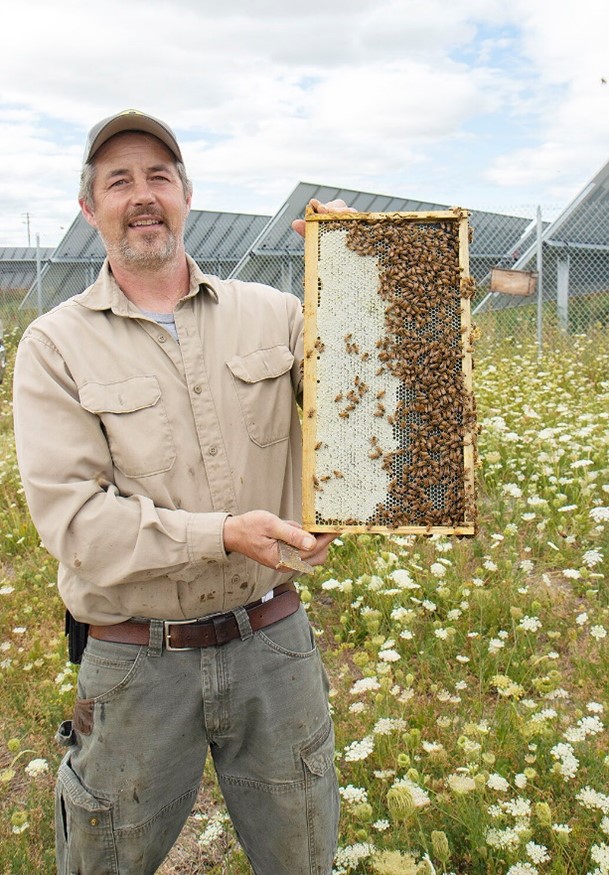Drought may hurt honey bees; experts say cover crops could help
By: Sierra Dawn McClain, Capital Press
John Jacob, beekeeper and owner of Old Sol Apiaries, holds a frame of honeycomb and bees.
Bees are expected to struggle most in California followed by Oregon, where meteorologists predict a hot, dry summer.
“I’m really worried about it,” said John Jacob, beekeeper and owner of Old Sol Apiaries in Southern Oregon. “Seems like it’s going to be extremely dry.”
Honey bee colonies can typically handle extreme heat as long as they have access to uncontaminated water, pollination experts say. The more serious problem is a potential lack of pollen sources — especially during late summer.
Lack of food sources can lead to colony collapse.
“Colonies are probably going to do really well this spring,” said Andony Melathopoulos, pollinator health specialist at Oregon State University Extension. “There’s enough moisture in the ground and a lot of things are still blooming. Where the rubber will hit the road — and it always does, it’s getting worse and worse — is when blackberries stop blooming around the end of June. Then the 80,000 honey bee colonies in (Oregon) don’t have a lot to go to.”
According to the California Farm Bureau, beekeepers statewide are worried about diminishing food sources.
Experts say it’s important for bees to have access to late-blooming plants through August when the landscape is dry and brown.
Jacob, the beekeeper, said he’s prepared to do whatever it takes to feed his bees through the drought, including feeding syrup. But this is expensive, and when beekeepers across the sector do so, it can drive up hive rental costs for farmers.
Whenever possible, Jacob prefers feeding his bees by working with farmers who plant cover crops that flower during the summer.
Tucker Pyne, owner of the Lucky Elk Farm in Rogue River, Ore., is one farmer Jacob works with. Pyne runs a small organic farm producing hemp, vegetables, fruit and meat.
Pyne uses cover cropping systems — a rare practice in the hemp sector, according to experts. He said his primary goal is to enrich his soil, and supporting pollinators is just a secondary benefit.
“The main reason why I use cover crops is to build organic matter in the soil,” Pyne said. “I’ve found cover crops are the most cost-effective way to do that.”
Pyne uses several cover cropping methods: rotating fields, inter-seeding directly into his crops and planting in the aisles. His cover crops include sunflowers and buckwheat, which bloom through August, feeding bees at a critical time.
“It provides tremendous food for pollinators, and it’s beautiful — very Instagram-friendly,” he said.
Jacob, the beekeeper, said he wishes more growers would consider planting cover crops.
“It would make a huge difference,” Jacob said.
Melathopoulos, the OSU researcher, is working on trials this year with cover crops and other blooming plants to find the ideal species that can help both farmers and pollinators.
Melathopoulos is experimenting with Hubam clover, various legumes, forage chicory, phacelia and other plants. He’s looking for plants farmers can use to enrich crop and livestock systems that simultaneously provide food for bees during droughts.
https://www.capitalpress.com/ag_sectors/orchards_nuts_vines/drought-may-hurt-honey-bees-experts-say-cover-crops-could-help/article_85edbff2-a862-11eb-919f-f7a58b6225f4.html









